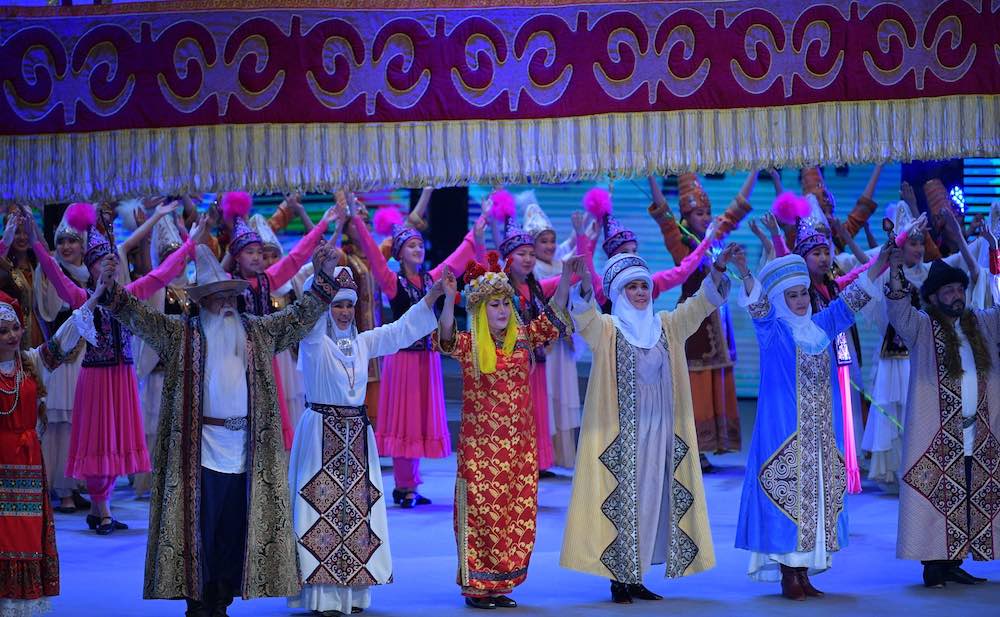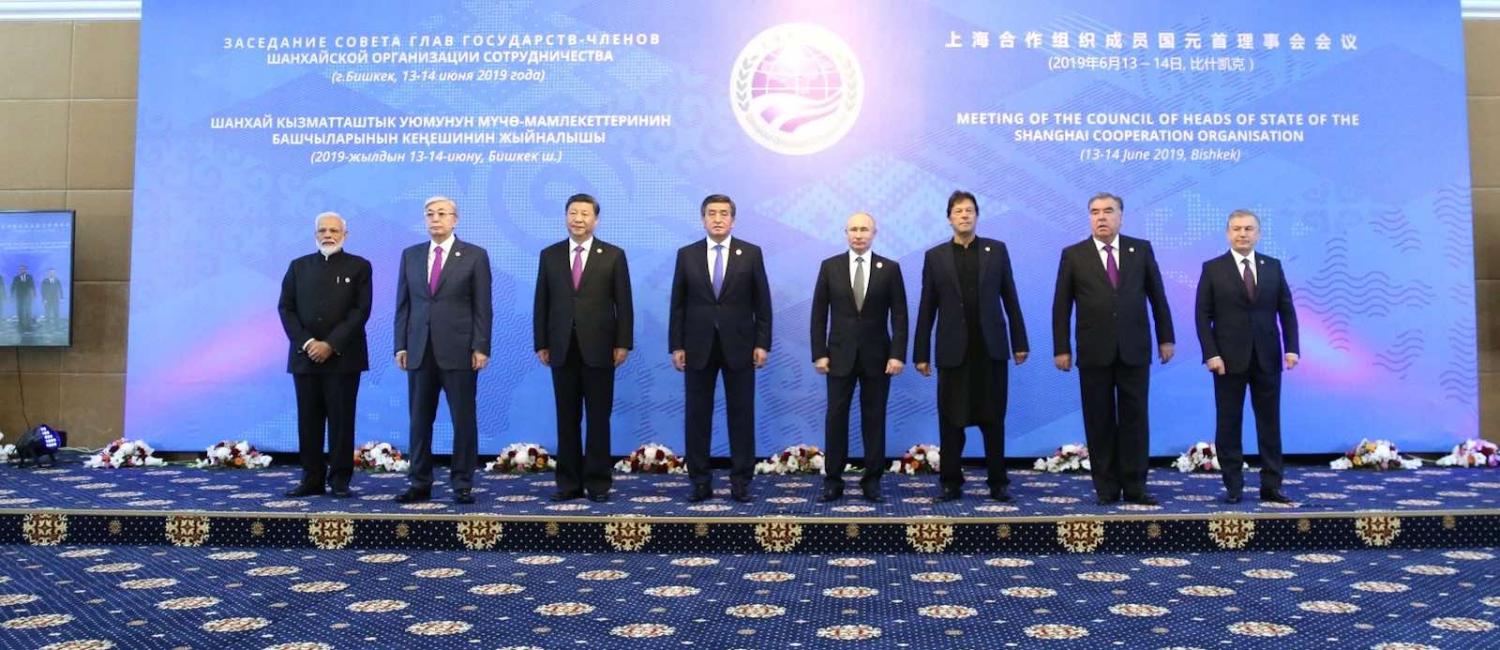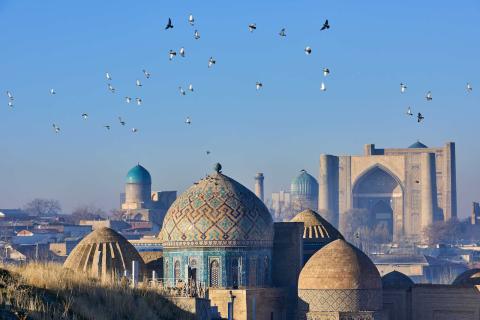Over its 18-year existence, Shanghai Cooperation Organisation has mostly been in the spotlight as a forum for security cooperation, starting with the 2001 Convention that branded crimes of extremism, separatism, and terrorism as extraditable offences. The region is still facing significant security challenges, yet lately there have been multiple attempts to rebrand SCO as a multi-profile institution pursuing “favourable environment for trade and investments […] to gradually achiev[e] free flow of goods, capitals, services and technologies”, as stipulated in the organisation’s Charter. While these modest equivalents of the European Union’s “four freedoms” still lie beyond the horizon, the steps taken in this direction are worth looking at for at least two reasons.
First is the way this rebranding illustrates the intergovernmental nature of the SCO. As distinct from the Eurasian Economic Union (EAEU) and BRICS grouping, SCO does not have a comparable financial institution for joint development funding. On a more “molecular” level, SCO’s Business Council is working to cultivate a cross-regional business ecosystem by supporting individual start-ups and humanitarian projects; however, the piecemeal funding it attracts comes from private investors.
For the joint funding purposes, SCO Inter-Bank Consortium was created in 2005, but its structure is rather that of an annual meeting between the bank coordinators and financial institutions of the Member, Observer, and Dialogue Partner States, with the job to choose development-oriented projects for financing from the SCO’s special lending facility – with only scarce publicly available information about the latter’s mechanism of functioning, the criteria for choosing projects, or the chosen projects themselves. Whether such a reserved approach points at the lack of trust among the Member States or their preference for other platforms is an open question.

The second reason to give this rebranding attention is that despite all the challenges, including underdeveloped infrastructure, the region’s untapped economic potential is huge, evidenced by its growing trade and investment activities. Trade turnover between China and the SCO countries hit a US $337 billion mark in 2018, 17% higher than in 2017, while Chinese FDI into the SCO region grew at an average 144% annually since 2008 – all against a stalling trend after MOFCOM pronounced restrictions on “irrational outward investment”, causing China’s total ODI to drop by 23% in 2017 and by further 13.6% in 2018.
SCO governments are also aware of and willing to cultivate this potential: 10 of 22 documents signed at the Bishkek Summit of the Heads of State directly address economic cooperation initiatives, and the discussions and project proposals at the most recent Council of Prime Ministers’ Meeting in Tashkent fulfil General Secretary Vladimir Norov’s remarks on heightened attention to economic and investment cooperation under the SCO umbrella. Such cooperation, however, bears a distinct “norm-creating” character, leaving infrastructure construction projects to alternative (mostly bilateral) platforms.
SCO has to confront many challenges before it can gain wider trust for its newly rebranded image and escape the anti-Western labelling of the organisation.
SCO is instead focusing on the “soft” side, creating simplified administrative regimes for multilateral cooperation. The 2014 Agreement on International Road Transportation Facilitation is one example, providing for simplified procedures in the transportation of goods (such as mutual recognition of driver’s licences, and duty- and tariff-free transit for the operators) across the five transcontinental “green corridors” stretching from the Chinese port city of Lianyungang over the territories of the earlier six member states, with the extension to India and Pakistan under discussion.
For China, this string of SCO’s activities offers more opportunities for mergers with its other trade diplomacy projects. Lately, the Chinese city of Chongqing, which already plays an important role in boosting China’s relations with Singapore, has emerged as a major hub for China-SCO trade and economic cooperation. Its “national-level development area” of Liangjiang – the first inland equivalent of Pudong New Area in Shanghai and Binhai New Area in Tianjin – hosts the Multifunctional Trade and Economic Platform for the SCO Countries, a public-private partnership project supported by the SCO Business Council, which will help SCO countries’ businesses enter Chinese markets on favourable conditions. In this and other projects, SCO’s brand, recognisable especially in the Central Asian states, contributes significantly to the trust-building element between the parties.
These embryonic initiatives raise many questions regarding the forces shaping legal and regulatory frameworks governing what could become potential SCO-wide free trade zones. The key question here, arguably, looms over the organisation’s ability to balance out interests of its stronger members – notably, China and (less so) Russia – instead of simply becoming their vehicle for norm-making power projection.
It is not surprising, therefore, that the SCO officials themselves are cautious about using the word “integration” when speaking about the SCO’s agenda. This cautiousness translates into the written language too: compared to other international agreements, provisions in most SCO documents look more like preambulatory than substantive clauses, often serving a decorative role to draw attention to the convergence, rather than divergence, of the governments’ positions. Coupled with the behind-the-scenes negotiations, they resemble a dance between cautiousness and efficiency, which results in a multidimensional – but also fragmented and uneven – process of integration between the countries willing to deepen economic cooperation, yet wary of the pitfalls once experienced in their shared history.
SCO has to confront many challenges before it can gain wider trust for its newly rebranded image and escape the anti-Western labelling of the organisation. One area it should start with is more efficiency in managing public communication. Important information related to the organisation and its activities is still often unavailable equally in the SCO official languages and English. Few data points, apart from the news on the meetings, are available on the official websites, and most of the quality information about the SCO proceedings remains that from the organisation’s insiders. This prevents efficient communication not only with the Western colleagues, but also with the SCO countries’ own academic circles and general public. Should the SCO aim to prove its nature as the organisation of “a new type”, greater transparency and efficiency should be pursued.

